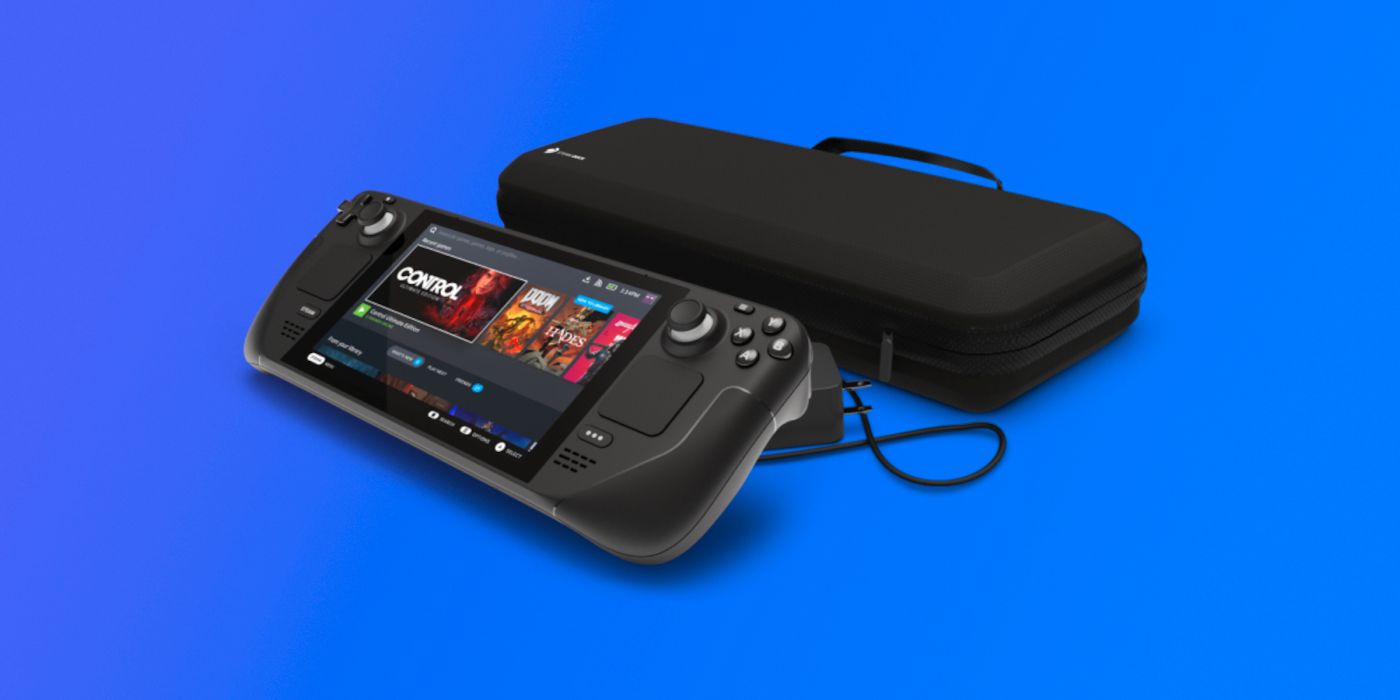
Valve recently announced the Steam Deck, a handheld gaming PC that took the industry by storm thanks to its affordable pricing and impressive power. Immediately drawing comparisons to the Nintendo Switch due to its form factor, fans have been wondering how the Steam Deck will stack up to the recently announced Nintendo Switch OLED.
Despite their similarities in form, however, the Steam Deck and Nintendo Switch are vastly different when it comes to specs. Fundamentally, they are different in their target audiences, and it's clear that the spec differences reflect that. Nonetheless, it's interesting to see how the Steam Deck and Nintendo Switch match up to one another. Since its original release, the Nintendo Switch has dominated the handheld gaming market, but the Steam Deck has the potential to finally offer some competition thanks to its pricing.
RELATED: Complete Steam Deck Spec Breakdown
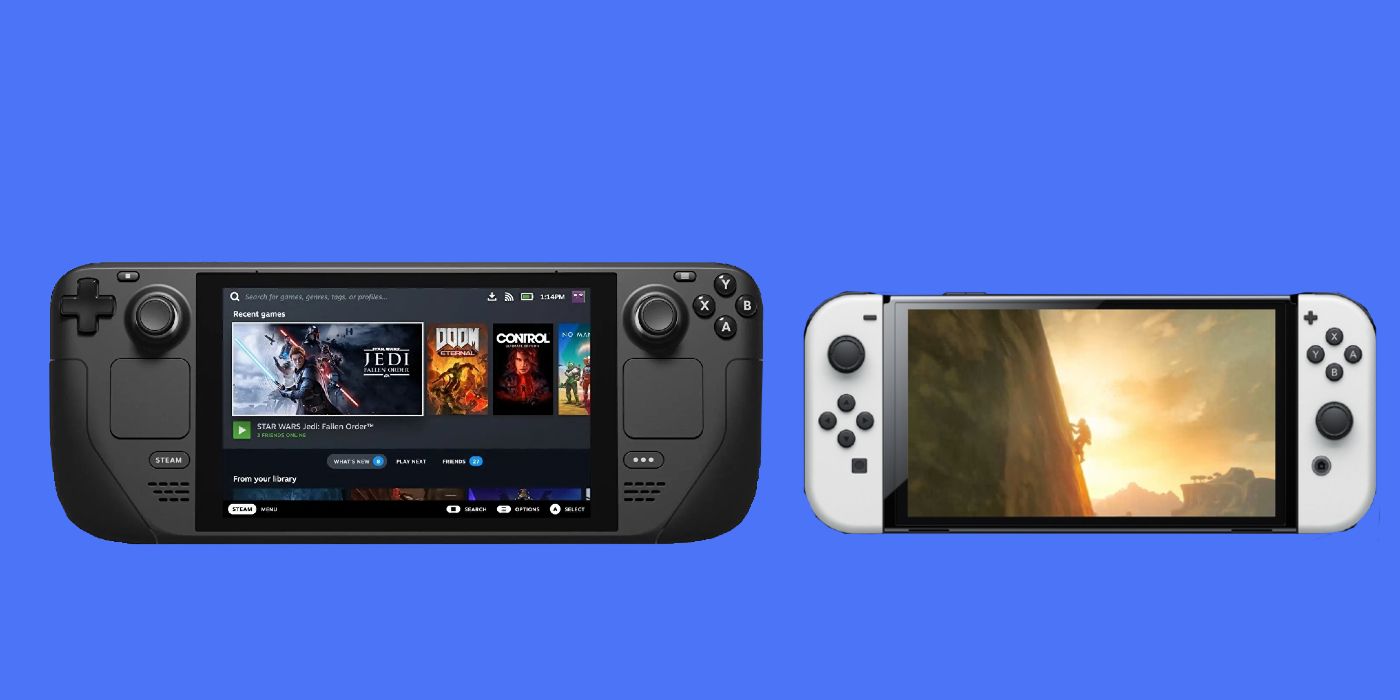
It shouldn't be surprising to see the Steam Deck outclass the Nintendo Switch in terms of hardware specs simply because it's built to be a handheld gaming PC instead of a console. Featuring a custom AMD APU, the Steam Deck has a quad-core Zen 2 CPU alongside a RDNA 2 GPU. It also runs on 16GB of LPDDR5 RAM, which is optimized for mobile computing devices due to its lower power consumption. On the other hand, the Nintendo Switch hasn't changed its hardware since its release, and the OLED model will continue to use the Nvidia Tegra X1 chipset with the Maxwell architecture for its GPU. The Nintendo Switch only has 4GB of LPDDR4 RAM, and it's quite clear that the Steam Deck's hardware far eclipses the Nintendo Switch.
In terms of hardware, however, the Nintendo Switch does beat the Steam Deck in one area and that's battery life. As a consequence of being able to run a variety of PC games at 720p with 60 FPS, it's likely that the Steam Deck's battery life will also vary depending on the game being played. As a benchmark, Valve announced that the Steam Deck can run Portal 2 for about 4 hours at 60 FPS. A typical charge for the Steam Deck can last anywhere from 2-8 hours, while the Nintendo Switch will typically last from 4-9 hours.
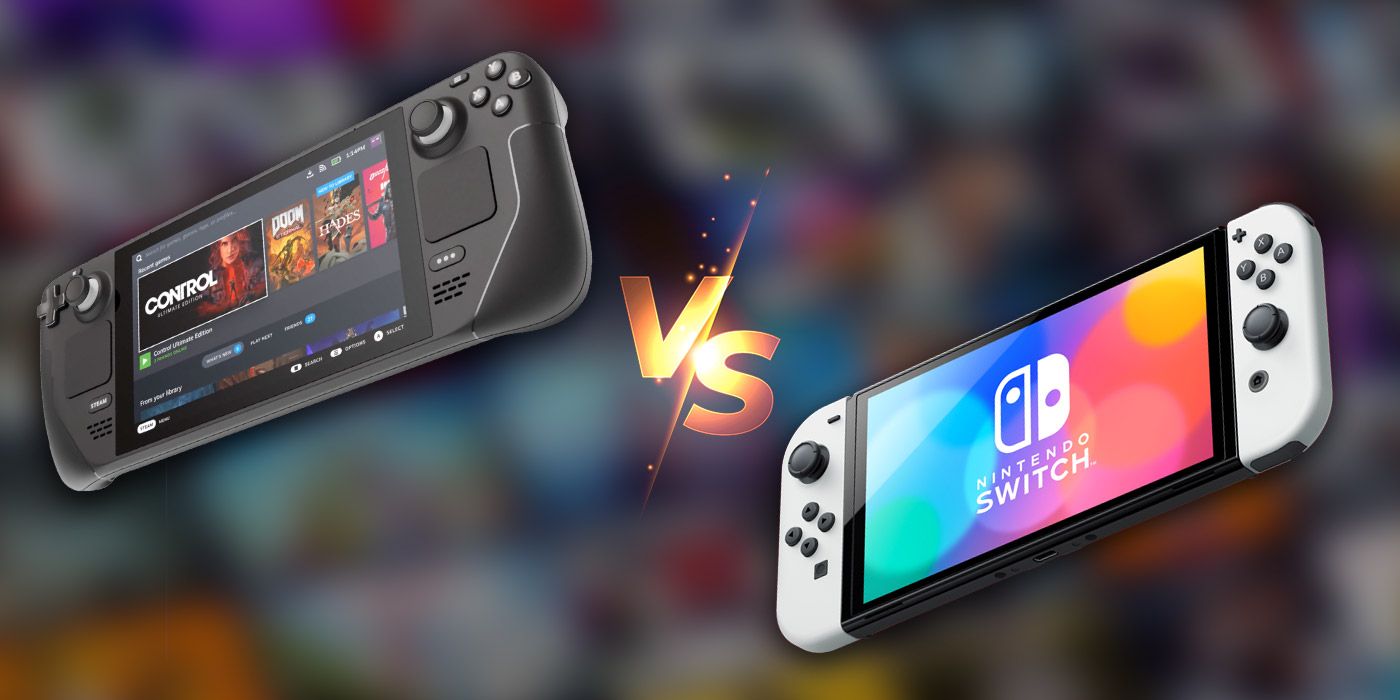
The biggest reason that the Steam Deck and Nintendo Switch are being compared at all is the aggressive pricing that Valve introduced. It shouldn't be a surprise that a handheld gaming PC will offer more power than the Nintendo Switch, but Valve's pricing strategy has instantly allowed them to be a part of the conversation. Unlike other handheld gaming PCs such as the GPD Win 3 or AYA NEO that can easily reach upwards of $1000, the Steam Deck will start with a price of $399 for its 64GB version while going up to $529 for its 256 GB and $649 for its 512GB versions. Gabe Newell stated that the undercut pricing was a strategy to stand out from competitors and establish Valve in the market.
Compared to the Nintendo Switch OLED, which will retail at $349, the $50 increase is almost negligible in terms of the performance increase. Unlike the Steam Deck, the Nintendo Switch OLED won't have different storage tiers, but it will include 64GB of eMMC storage just like the base Steam Deck model. Both the Steam Deck and Nintendo Switch OLED will also have support for microSD cards to increase storage. It should be obvious that a handheld gaming PC would beat the Nintendo Switch in terms of hardware, but the fact that the pricing is so similar means that the Steam Deck's performance stands out from the entire handheld gaming market.
RELATED: Valve Boss Gabe Newell Says Steam Deck Price Was ‘Painful’ to Achieve
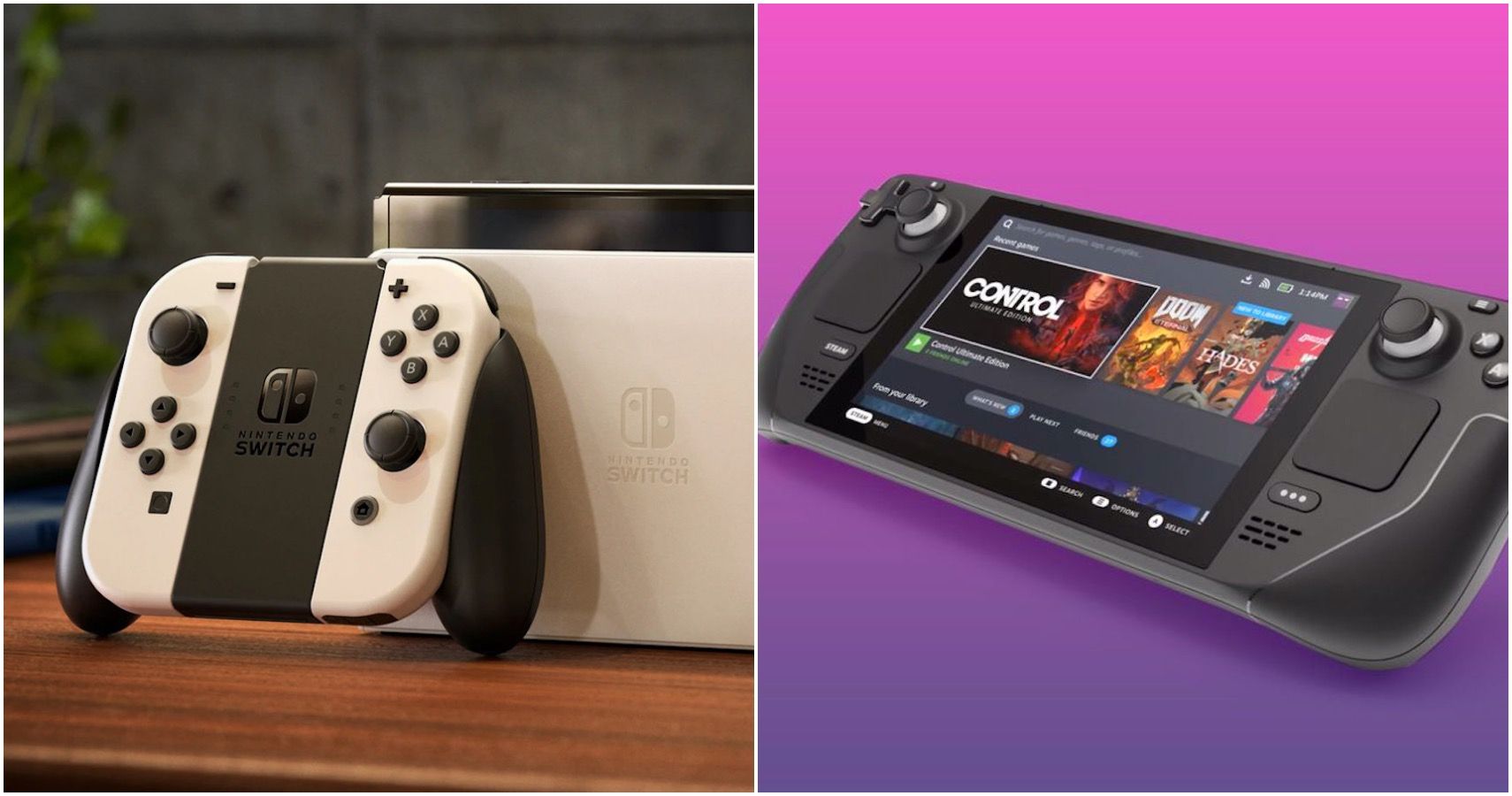
The Steam Deck is a little bulkier than the Nintendo Switch, as it weighs more and its dimensions are noticeably wider. The Nintendo Switch also features detachable Joy-Cons which are useful to use as two singular controllers when propping up the kickstand. However, Joy-Con drift has become a notorious problem for Switch owners and has yet to be directly addressed or resolved. On the other hand, Steam Deck doesn't have detachable controllers, but it does base its design around the Steam Controller by introducing two trackpads to provide a more traditional mouse-like experience. Furthermore, it takes a page from the Xbox Elite controller by adding four remappable grip buttons. These differences mainly come down to preference, and fans who found the original Steam Controller clunky might be put off from the Steam Deck.
In terms of the display, the Steam Deck and Nintendo Switch OLED are fairly similar. Neither will support a 1080p resolution, as the Steam Deck will have a 800p display while the Nintendo Switch OLED will include a 720p display. Both resolutions can be increased when docked and they will both have a LAN port for Ethernet connections. Theoretically, the Steam Deck can output to 8K resolutions just like a PC, but realistically it'll likely be limited to traditional 1080p. The Nintendo Switch OLED will feature an upgraded OLED display, meaning that it'll have better contrast and deeper blacks than its predecessors. The Steam Deck features an LCD screen with the $649 tier, offering anti-glare etched glass.
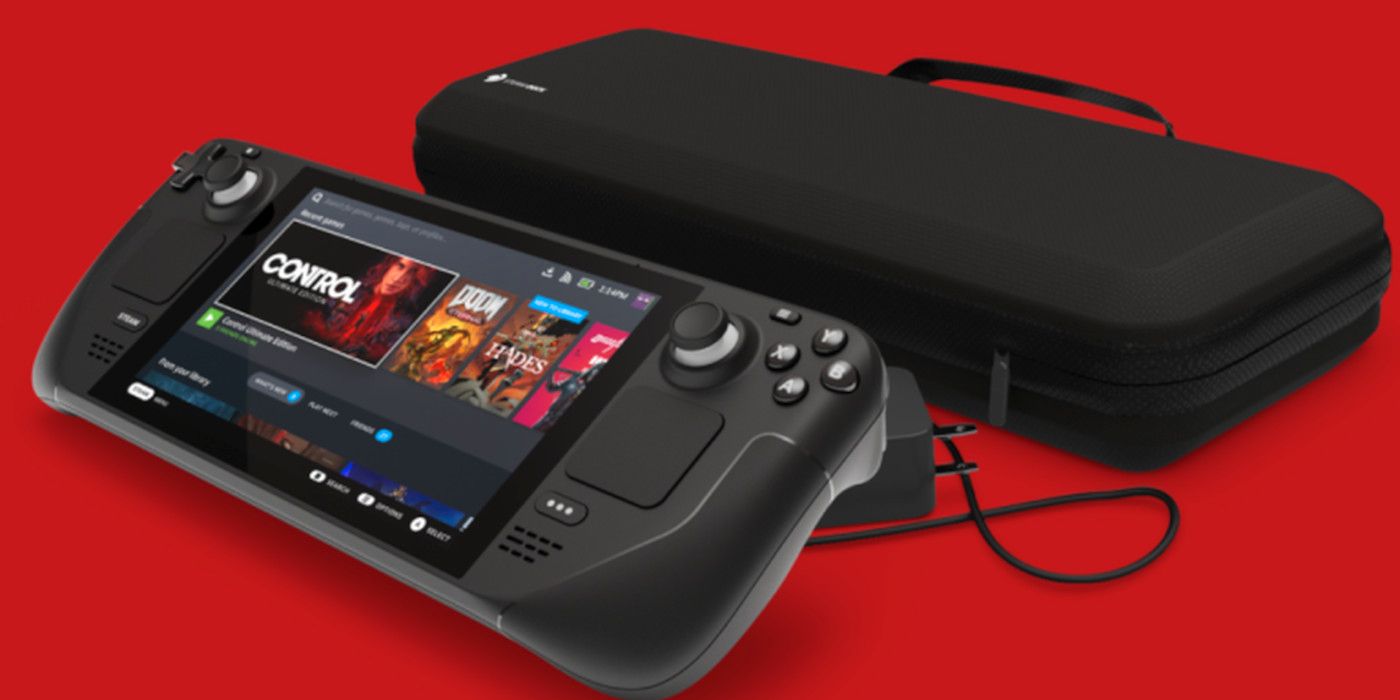
Ultimately, despite their similarities in form factor, the Steam Deck and Nintendo Switch OLED could not be more different. The fundamental difference is that the Steam Deck is intended to act as an actual PC with an open platform, allowing for installation of any software or OS that a traditional PC would. Just like any console vs PC argument, a lot of the final decision comes down to player preferences. That said, the Steam Deck's pricing strategy does open up the handheld gaming market a little bit and may encourage other developers to create competition for the Nintendo Switch.
The Steam Deck certainly isn't going to beat the Nintendo Switch given its first-party games and foothold in the market, but it does offer a unique alternative that's competitively priced. The Steam Deck seems to be targeted at PC gaming enthusiasts who have built up a library of Steam games, with it also appealing to fans who are looking to get into PC gaming for a reasonable price. The Nintendo Switch OLED relies on attracting its core audience as it's always done through first-party titles and being a household name. In the end, both systems have their unique advantages, but it's still interesting to see how Valve has created an affordable handheld gaming PC that can serve as real competition for the Nintendo Switch.
Valve's Steam Deck releases this holiday and the Nintendo Switch OLED releases October 8, 2021.
MORE: Steam Deck Reservations for 2021 Sell Out and Early 2022 is Going Quickly

